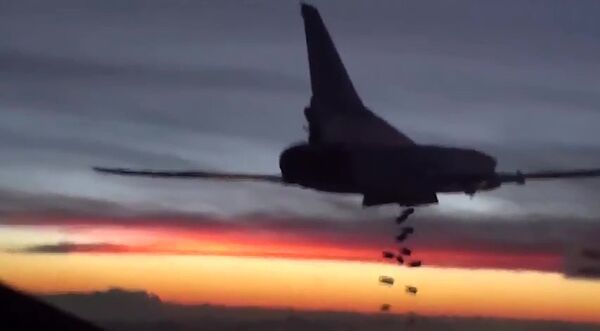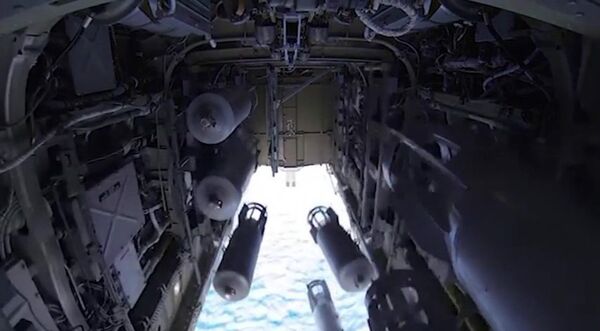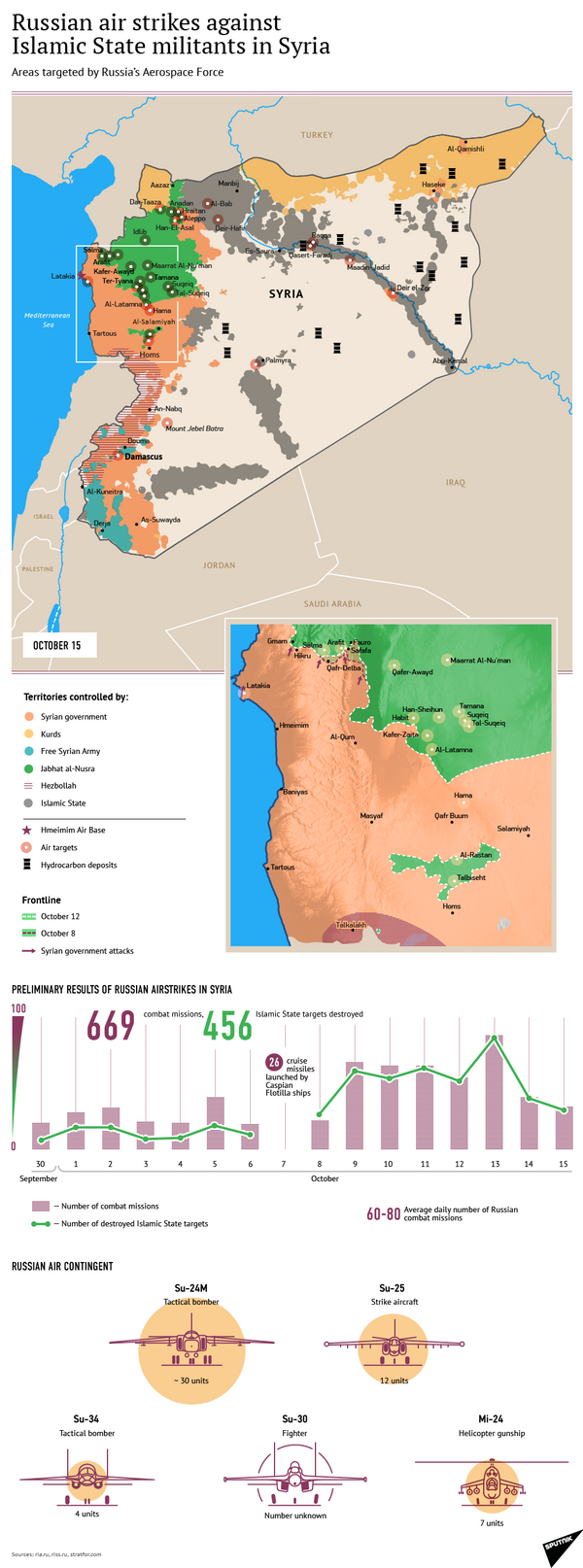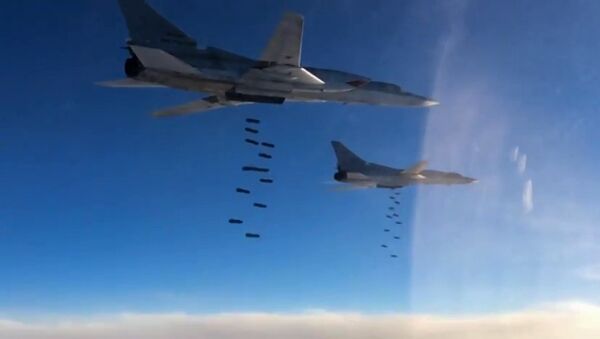Just look at the numbers. On November 17, airstrike operations were conducted by 24 Tu-22M3s, as well as five Tu-160 and Tu-95MS.
#SYRIA Squadron of Tu-22M3 long-range bombers made a concentrated strike on 6 facilities in #Raqqah and Deir ez-Zor provinces
— Минобороны России (@mod_russia) 19 ноября 2015

A squadron of the Tu-22M3 bombers, according to the Russian Ministry of Defense, targeted six facilities in the provinces of Raqqa and Deir ez-Zor destroying ISIL headquarters, ammunition depots, a plant where militants were making explosive devices, as well as well as a command center and three oil production sites.
Destroyed: 1 HQ 3 POL and ammo depots 1 plant producing explosives 1 command centre 3 oil production sites
— Минобороны России (@mod_russia) 19 ноября 2015
The supersonic, variable-sweep wing Tu-22M3 is a long-range strategic and maritime strike bomber. The aircraft is the latest modification of the Backfire family in service with the Russian Armed Forces since 1989.

"When the Backfire was introduced into service, it caused a lot of concern within the US Navy because it is designed to carry a massive load of long-range anti-ship cruise missiles. The jet is fast – it has a top speed of Mach 1.88 and will easily sustain Mach 1.6 for extended periods – and carries 53,000lbs of weapons. Typically, that meant the Tu-22M3 could be carrying ten Raduga Kh-15 anti-ship missiles or three massive Raduga Kh-22 missiles – both of which can hit speeds of around Mach 5.0," Defense analyst Dave Majumdar wrote for the National Interest.
The Tu-22M3 strategic bomber, designed by the Tupolev aerospace and defense company, is expected to be replaced by Russia's stealthy fifth generation long-range bomber, dubbed the PAK DA, and the newest modification of the Tu-160.
"But that might not be the end of the road for the Backfire. There have been persistent rumors that China wants to buy the aircraft as part of its anti-access/area denial strategy," the analyst observed.


